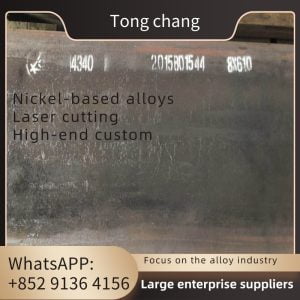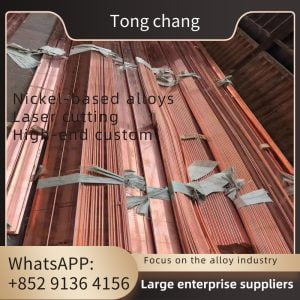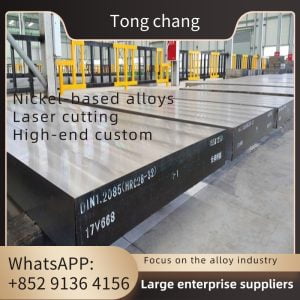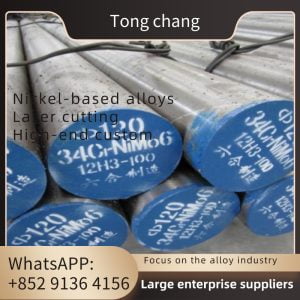| 标准: | A312 | 材料等级: | 310S |
|---|---|---|---|
| 类型 | 翅片管,换热管,不锈钢加热设备,三风道冷凝器,冷媒储液器 | 长度 | 单随机,双随机和剪切长度 |
| 包装 | 胶合木箱/铁箱/捆包 | 申请: | 加热器部件,制冷部件,热交换器,冷却器,流体冷却器 |
| 强光 | High Temperature Resistant SS Corrugated Tubes, TP310S Stainless Steel Corrugated Tube | ||
ASTM A312 TP310S Stainless Steel Corrugated Tubes High Temperature Resistant Finned Tubes
特征
Due to the high content of nickel (Ni) and chromium (Cr), it has good oxidation resistance, corrosion resistance, acid and alkali resistance, and high temperature resistance. High temperature resistant steel pipes are specifically used for manufacturing electric furnace tubes and other occasions. After increasing the carbon content in austenitic stainless steel, its strength is improved due to its solid solution strengthening effect. The chemical composition characteristics of austenitic stainless steel are based on chromium and nickel, with the addition of elements such as molybdenum, tungsten, niobium, and titanium. Due to its face centered cubic structure, Therefore, it has high strength and creep strength at high temperatures.
High temperature resistant stainless steel pipe, also known as 310S (0Cr25Ni20) stainless steel, is an austenitic chromium nickel stainless steel with good oxidation resistance and corrosion resistance. Due to the high percentage of chromium and nickel, it has much better creep strength and can continue to operate at high temperatures, with good high temperature resistance.
310S 化学成分
| SS | 310 | 310S |
| 倪 | 19 - 22 | 19 - 22 |
| 铁 | 平衡 | 平衡 |
| Cr | 24 - 26 | 24 - 26 |
| C | 最大 0.25 | 0.08 最大值 |
| Si | 最大 1.50 | 最大 1.50 |
| 锰 | 2 最大值 | 2 最大值 |
| P | 0.045 最大值 | 0.045 最大值 |
| S | 最大 0.030 | 0.03 最大值 |
310S Mechanical Property
| 等级 | 310 | 310S |
| 最小拉伸强度(兆帕 | 515 | 515 |
| 屈服强度 0.2% 抗压强度(兆帕) min | 205 | 205 |
| 伸长率(%,50 毫米)最小值 | 40 | 40 |
| 硬度 | ||
| 洛氏 B (HR B) 最大值 | 92 | 92 |
| 最大布氏硬度 (HB) | 201 | 201 |
310S Physical Properties
| 等级 | 密度(千克/立方米) | 弹性模量(GPa) | 平均热膨胀系数 (m/m/0C) | 导热系数(瓦/米.K) | 比热 0-1000C (J/kg.K) | 电阻率(n.m) | |||
| 0-1000C | 0-3150C | 0-5380C | 在 1000C 时 | 在 5000C 时 | |||||
| 310 / 310S | 7750 | 200 | 15.9 | 16.2 | 17 | 14.2 | 18.7 | 500 | 720 |
Analysis of the uses of finned tubes
Heat transfer principle
Finned tube is a heat transfer element, and its heat transfer principle is to achieve heat transfer through the heat conduction path between the fins and the tube wall. The presence of fins can increase the surface area of the tube, thereby increasing the heat exchange surface and achieving more efficient heat transfer. At the same time, the shape of the fins can also generate different flow states of the fluid, increase heat transfer intensity, and improve heat transfer efficiency.
应用范围
Finned tubes are widely used in various industrial fields, such as petrochemicals, pharmaceuticals, metallurgy, nuclear industry, etc. It is also widely used in fields such as air conditioning, refrigeration, heat exchangers, steam heaters, and automotive radiators. It can be said that finned tubes are an important component of heat exchangers.
优势
1. High heat transfer efficiency: Due to the design of finned tubes, their heat transfer efficiency is two to three times higher than that of ordinary straight tubes, with a larger heat transfer area, thereby improving the heat transfer efficiency.
2. Material cost savings: The cost of finned tubes is higher than that of ordinary straight tubes, but due to their high heat transfer efficiency, they can reduce tube length and save material costs.
3. Strong adaptability: Finned tubes can be designed according to different working conditions to adapt to different industrial environments and heat transfer needs.
Summary
Finned tube is a heat transfer element with high heat transfer efficiency and strong adaptability. Widely used in various industrial fields, especially in pharmaceuticals, metallurgy, nuclear industry, and other fields. Although finned tubes have certain shortcomings, their advantages are obvious and they are still an important component of heat exchangers.







